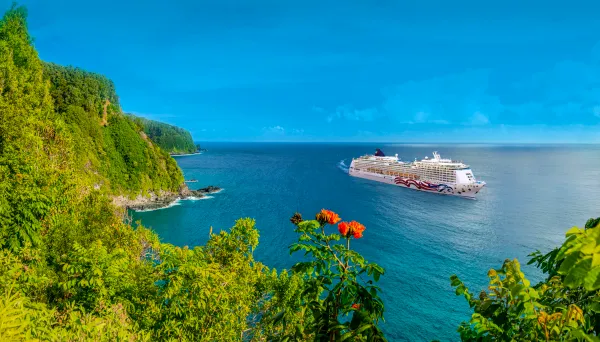Cruise Port Developments in Las Palmas and Beyond
The terminal’s launch reflects major investment in Canary Islands port infrastructure, elevating Gran Canaria’s status among European cruise destinations and focusing on sustainable operations.

Las Palmas Cruise Port marked a major milestone on October 2, 2025, with the operational debut of its state-of-the-art terminal at Santa Catalina Pier, signaled by the arrival of the Celebrity Apex. The new terminal, the largest in Europe, positions Gran Canaria as a premier hub for international cruise travel, supporting both transit and homeport operations. To commemorate the occasion, a traditional plaque exchange was held between the ship’s captain and representatives from the Las Palmas Port Authority.
New Las Palmas Cruise Terminal: A Landmark Investment
Spanning 14,000 square meters over two floors, the terminal, operated by Global Ports Holding (GPH) in partnership with SEPCAN, is a key element of a €40 million investment to upgrade cruise infrastructure across Gran Canaria, Fuerteventura, and Lanzarote. Equipped with three boarding bridges, the facility can accommodate up to four vessels simultaneously. It features retail spaces, dining areas, landscaped walkways, a restored palm grove, and an exterior esplanade designed to enhance passenger experiences and streamline embarkation and disembarkation processes.
Sustainability was prioritized throughout the project with eco-friendly materials, energy-efficient systems, solar power, and improved waste management practices. Built by Satocan, the terminal underscores the region’s commitment to environmentally responsible development and innovation.
Beatriz Calzada, President of the Las Palmas Port Authority, emphasized the broader significance of the opening: “Las Palmas Cruise Port represents a major step forward in our infrastructure and service offerings. With this terminal, we strengthen the Canary Islands' position in the Mid-Atlantic and establish Las Palmas as a key hub for both homeport and transit cruise operations.”
Susana Gutierrez, General Manager of GPH Canary Islands Cruise Ports, added: “This project marks the beginning of a new era for the Port of La Luz. With this infrastructure, we take a decisive step toward the professionalization of cruise services and reaffirm our commitment to sustainable growth on the island.”
San Juan Cruise Port: A Multi-Million Dollar Modernization
In Puerto Rico, a $110 million investment by Global Ports Holding is enhancing the San Juan Cruise Port. The upgrades, expected to be completed by the 2026–2027 cruise season, include the reconstruction of the Pan American Pier’s 1,500-foot seawall and structural improvements to Piers 3 and 4 to support larger vessels, including Icon-class ships. The modernization also features remodeled terminal bathrooms, upgraded HVAC systems, and 36 new bollards to improve docking capabilities.
Clarivette Diaz, General Manager of San Juan Cruise Ports, stated: “The most important outcome of these capital investments is the renewed confidence from cruise lines in San Juan as a leading Caribbean homeport destination. We see tremendous potential for San Juan to strengthen its position as the Caribbean’s leading homeport destination.”
With projected passenger numbers increasing to 1.8 million annually by 2028, the growth trajectory may trigger the construction of two additional piers under the terms of GPH’s 30-year operating concession if arrivals reach 1.9 million or more. San Juan’s strategic location and connectivity play a vital role in attracting year-round cruise itineraries and boosting the region’s tourism economy.
Casablanca Cruise Port: A Strategic Hub
Looking toward 2026, Casablanca Cruise Port in Morocco is set to begin operations under a new 15-year concession agreement between Global Ports Holding (holding 51%) and Agence Nationale des Ports (ANP). Recently inaugurated by King Mohammed VI, the terminal is designed to handle over 450,000 passengers annually, featuring three boarding bridges and a 650-meter quay capable of accommodating ships up to 350 meters in length. The terminal also includes parking for 44 buses.
Mehmet Kutman, Chairman and CEO of Global Ports Holding, noted: “Casablanca Cruise Port is an important addition to our expanding regional network, strengthening our presence across the Atlantic and Mediterranean. Its modern facilities and strategic location make it an ideal link between established and emerging cruise destinations.”
With approximately €72 million invested by the ANP, the facility is poised to serve as a vital gateway for transatlantic itineraries connecting Europe, the Caribbean, and West Africa. Casablanca welcomed 150,000 passengers in 2024, with forecasts indicating growth to 180,000 transit passengers in 2025.
Frequently Asked Questions (FAQs)
What are the main features of the Las Palmas Cruise Terminal?
The Las Palmas Cruise Terminal spans 14,000 square meters over two floors, featuring three boarding bridges and the capacity to accommodate up to four vessels simultaneously. The facility also includes retail and dining areas, pedestrian walkways, a restored palm grove, and an exterior esplanade.
How will San Juan’s upgrades impact cruise itineraries?
The improvements will allow the port to accommodate larger ships, enhance operational efficiency, and attract year-round deployments. With expected passenger growth to 1.8 million by 2028, the construction of two additional piers may be triggered if arrivals reach 1.9 million or more annually, according to the concession agreement.
What is the significance of the Casablanca Cruise Port development?
Casablanca Cruise Port serves as a strategic hub for transatlantic routes connecting Europe, the Caribbean, and West Africa. Modern facilities, including a 650-meter quay, three boarding bridges, parking for 44 buses, and a capacity to handle over 450,000 passengers annually, solidify its position in GPH’s network.
What sustainability measures were implemented in these projects?
All three ports integrated sustainability into their designs. Las Palmas utilized eco-friendly materials, energy-efficient systems, solar power, and improved waste management, while similar modern infrastructure practices have been adopted across the San Juan and Casablanca projects.




